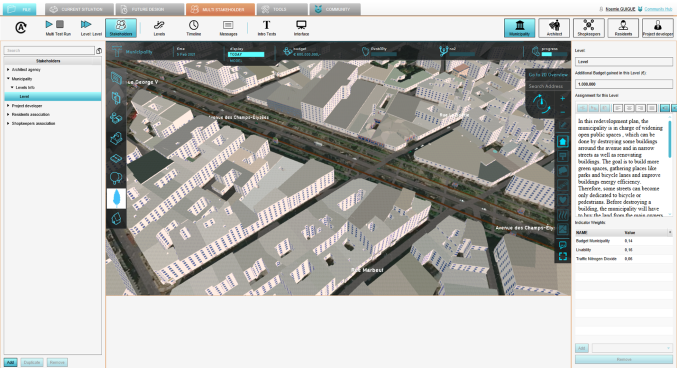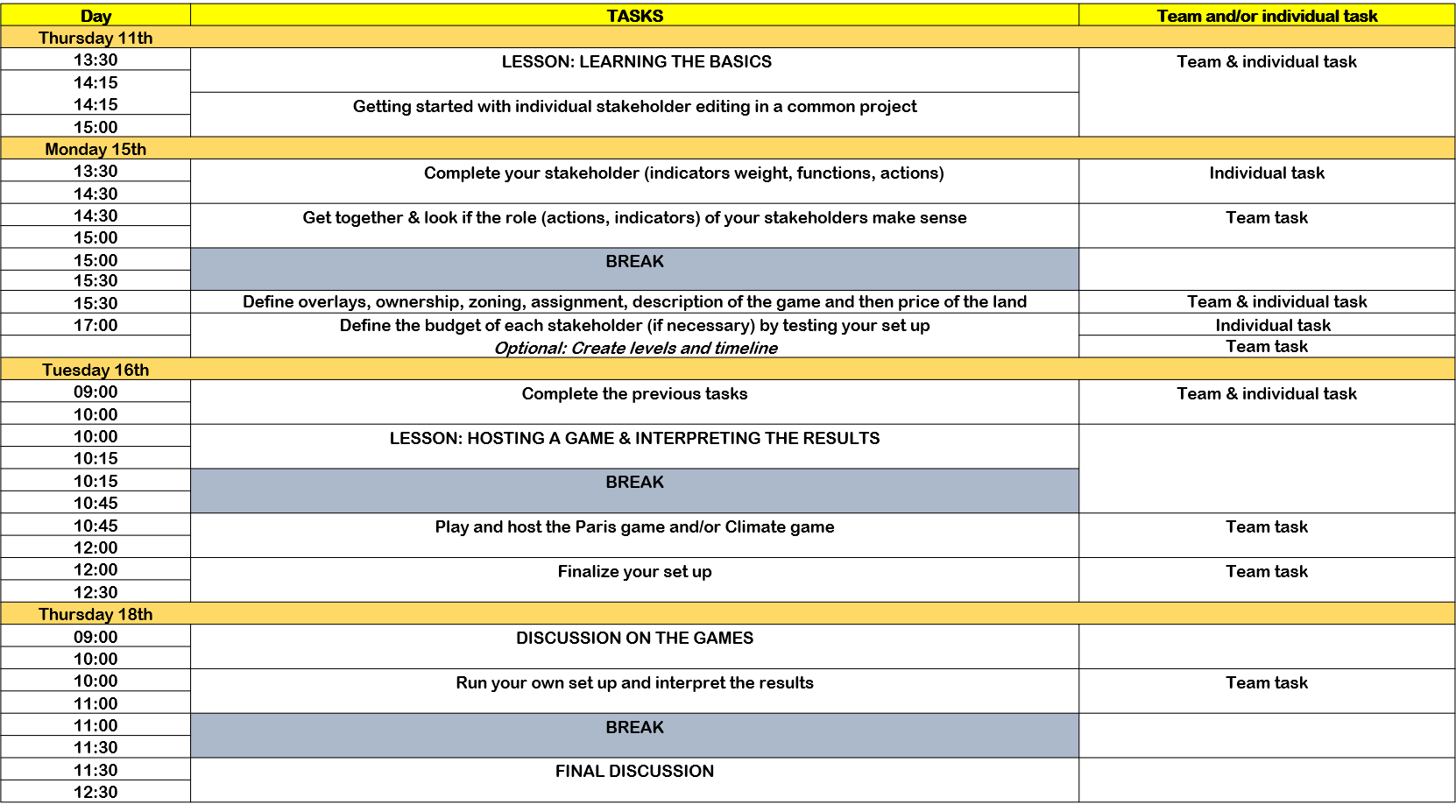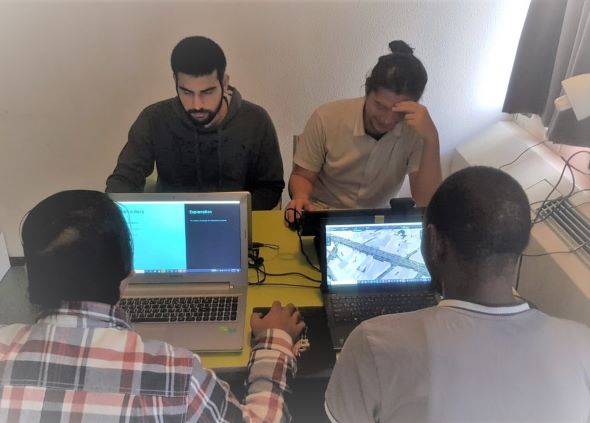Tygron for Decision-Making: Difference between revisions
| Line 1: | Line 1: | ||
=Use-case 5: ''“Scenario Building for Sustainable Cities”''= | =Use-case 5: ''“Scenario Building for Sustainable Cities”''= | ||
For a few years now, IHS has been using Tygron as a scenario building tool within its s"Urban Management Tools for Climate Change" short courses. During this course, the Tygron support team would join the students for half a day to help them play the Climate Game. Last year (2019-2020), [https://www.tygron.com/en/2020/05/15/ihs-integrated-the-tygron-platform-successfully-in-the-curriculum/ IHS decided to experiment with implementing Tygron for one of its Masters specializations]. The course was given as an elective for 15 students, and the implementation was completely successful. This success has pushed IHS team to design and implement a mandatory course using Tygron as part of the new curriculum. Contrary to last year, due to the COVID-19 restrictions, the course was completely done online this year. | For a few years now, IHS has been using Tygron as a scenario building tool within its s"Urban Management Tools for Climate Change" short courses. During this course, the Tygron support team would join the students for half a day to help them play the Climate Game. Last year (2019-2020), [https://www.tygron.com/en/2020/05/15/ihs-integrated-the-tygron-platform-successfully-in-the-curriculum/ IHS decided to experiment with implementing Tygron for one of its Masters specializations]. The course was given as an elective for 15 students, and the implementation was completely successful. This success has pushed IHS team to design and implement a mandatory course using Tygron as part of the new curriculum. Contrary to last year, due to the COVID-19 restrictions, the course was completely done online this year. | ||
[[File:IHSclassroom.jpg|350px|frame|center|IHS students playing the Climate Game during the pilot Tygron course (2020)]] | |||
==Content of the course== | ==Content of the course== | ||
Revision as of 09:32, 26 February 2021
Use-case 5: “Scenario Building for Sustainable Cities”
For a few years now, IHS has been using Tygron as a scenario building tool within its s"Urban Management Tools for Climate Change" short courses. During this course, the Tygron support team would join the students for half a day to help them play the Climate Game. Last year (2019-2020), IHS decided to experiment with implementing Tygron for one of its Masters specializations. The course was given as an elective for 15 students, and the implementation was completely successful. This success has pushed IHS team to design and implement a mandatory course using Tygron as part of the new curriculum. Contrary to last year, due to the COVID-19 restrictions, the course was completely done online this year.

Content of the course
General information
- Name of the course: "Scenario Building for Sustainable Cities"
- Study-block: "Applications of ICT for Smart and Sustainable Cities"
- Study Programme: Masters in Urban Environment Sustainability and Climate Change.
- Educational Institute: Institute for Housing and Urban Development Studies (IHS) of the Erasmus University Rotterdam.
Target students
- The course is designed for 30 students coming from different backgrounds
- The students do not have any prior knowledge of Tygron or other geodesign software.
- The students are expected to have some knowledge in decision-making.
- No specific skill sets or tools are required upon entering this course.
Objectives and desired outcome
The students are expected to learn planning and decision making for sustainable cities in a multi-stakeholder environment.
To do that, the lecturer and the teaching assistant have created a model case study based on the Champs-Elysées area in Paris using Tygron.
They called the model the "Paris Game". It is inspired from an existing redevelopment plan of the Paris municipality, with modified objectives.

The students are expected to form teams of 4-5, and design scenarios for improving sustainability of a chosen or given area, while creating a multi-stakeholder decision making environment.
More-specifically, each team is expected to develop its own scenario for this area by:
- Creating a story; defining the potential involved stakeholders, their indicators, their goals, their budget, etc.
- Simulate the interaction between stakeholders by playing the "game' as if in real life.
Design of the Course
Syllabus and logistics

As mentioned previously, this course is part of a study-block, so it is designed to take place over 4.5 days.
The following steps explain how the course goes:
- In the first day, students get introduced to the assignment, and immediately start experimenting with Tygron individually.
- They then form their own teams of 4-5 members and begin working on their assignments.
- Every team is assigned to improve livability and sustainability of one identical area (A section of Champs-Elyse street Paris). The case is inspired from local government’s plan for improving greenery in the neighborhood. However, the goals are expanded in order to make the assignment more challenging. This also allows to compare the approach of different groups with a common aim of addressing sustainability challenges in the same area.
- They start by defining the stakeholder roles, land pricing, goals, budgets, and indicators.
- Later, they host a multi-stakeholder session, with each team member as a stakeholder.
- At the end of the course, they go through a final discussion.
You can read more about the Paris case-study by downloading this document that IHS has created: File:Model case study Paris game.pdf.

Guidance and resources
For this course, the lecturer and the teaching assistant created their own game. It took them around one month of research and preparation to get the Paris Game ready.
For the course, the lecturers have made use of all Tygron's online support material including the wiki, the forum, demo projects and video tutorials. They also produced their own presentations to guide students on the proper use of Tygron for the assignment.
You can find the material here: